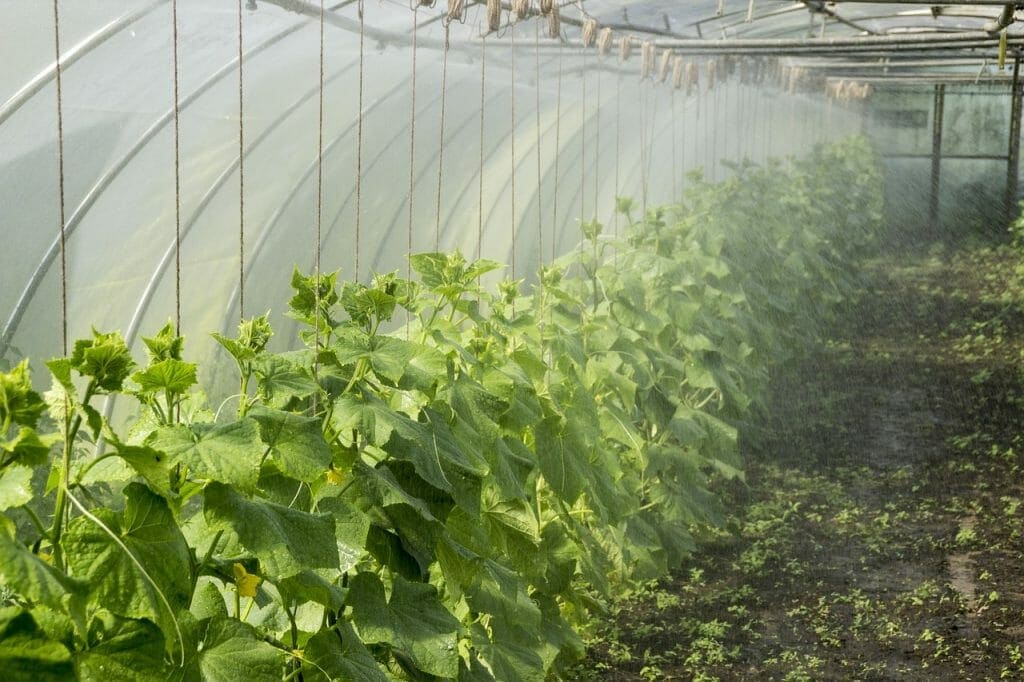Written by Christy Wilhelmi and published on https://grocycle.com/.
“Permaculture” means different things to different people, as it should, since it is a whole systems approach, and systems are diverse in use and in method. Coined by David Holmgren and Bill Mollison in the late ’70s, “permaculture” was defined, according to Holmgren.com.au, as “Consciously designed landscapes which mimic the patterns and relationships found in nature, while yielding an abundance of food, fiber, and energy for provision of local needs.”
The term now encompasses many strategies and goals in gardening, agriculture, and landscaping. Just as our Western medicine has begun to embrace some Eastern-based beliefs of mind-body, or whole system health care, we gardeners embrace a larger picture: permaculture as a way of sustainability for future generations. Sustainable practices are perceived as a noble pursuit for some, a way of life for others, a catch-phrase for even more.
Through permaculture we are recalling in our gardens and landscapes the way plants grow in nature. However, since many of us move often—from one town or suburb to another, across the state or the country—we, the backyard gardeners, the growers of salads, berries, herbs, and flowers, may think that it takes heavy labor, much time, and a big budget to accomplish permaculture. Otherwise, why would anyone NOT prioritize sustainable practices?
Permaculture Farming: The Ultimate Guide and Examples
If you’re looking for a way to produce food while working with nature instead of against it, permaculture is your answer.
What is permaculture farming? Permaculture gives farmers a way to achieve high yields and productivity while doing it in a more sustainable and environmentally-friendly way than conventional farming methods. It applies a more holistic approach to farming crops or livestock.
In this article, you’ll learn what permaculture is, the 12 principles of permaculture, its benefits, and several real-world permaculture practices.
What Is Permaculture?
Permaculture is an approach to agricultural design that focuses on whole systems thinking, as well as using or simulating patterns from nature.
The term originated from David Holmgren in 1978, but the practices of permaculture date back much further.
Permaculture has 3 core tenants:
- Care for the earth. In other words, help all life systems continue to exist and multiply. Because if we don’t have a healthy planet, humans can’t exist at all.
- Care for the people. Allow people to access resources they need to survive.
- Fair share. You should only take what you need, and reinvest any surplus. Any extra can go forward to helping fulfill the two other core tenants. This includes returning waste products back into the system so it can be made useful again.
Conventional agriculture tends to work against nature, instead of with it.
We tear up whatever natural ecosystem was on the land before, and turn it into a blank slate that we can plant crops or raise livestock on. But there’s another way.
By using principles of permaculture, you’re working with nature, instead of against it. That means that you can let nature do most of the work for you.
- Read my beginners guide of How To Start A Permaculture Garden
- Learn How To Create A Permaculture Orchard Guide
The 12 Principles of Permaculture
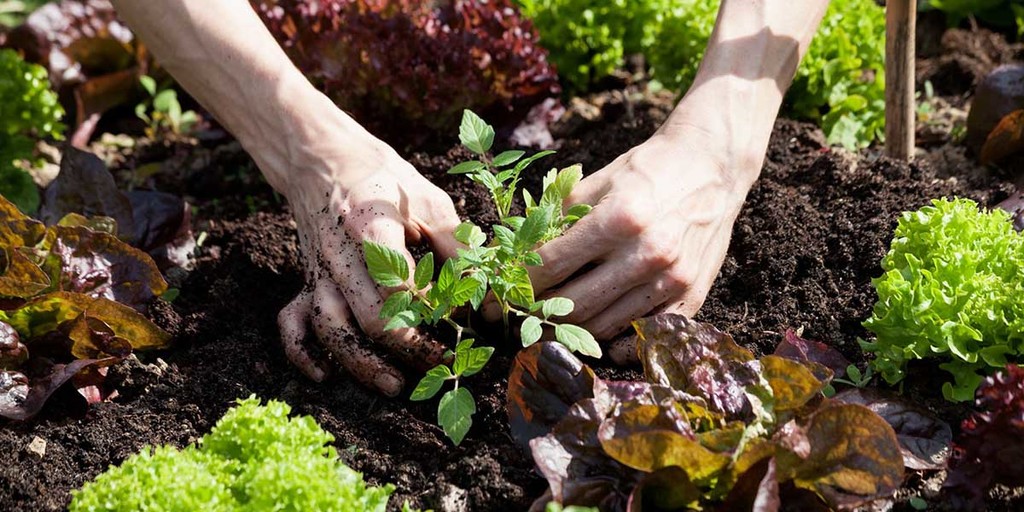
David Holmgren’s original ideas regarding permaculture can be broken down into twelve design principles.
1. Observe and Interact
Take time to observe nature before making any decisions or changes. Often just by observing, we can get a lot of insight into how to design our farm or garden to suit what’s already there.
2. Catch and Store Energy
In nature, resources tend to come in peak periods. We get a lot of sunlight in the summer, but much less in the winter. In some places there are rainy seasons some of the time, and droughts other parts of the time.
Permaculture is big on capturing resources like rainwater or solar electricity so they can be used later as needed.
3. Obtain a Yield
Make sure you’re being rewarded for the work that you’re putting in. After all, you probably aren’t farming just for a hobby. You want to get food, an income, or something else in return. You can’t work on an empty stomach.
4. Apply Self-regulation and Accept Feedback
Hold yourself accountable, and also be open to suggestions and critiques from others. If there is something you’re doing that’s inappropriate for your situation, you want to know about it, so your systems can function well.
5. Use and Value Renewable Resources and Services
Nature has an abundance of renewable resources that we can make use of. We should prioritize those, and try to reduce the consumption of non-renewable resources.
6. Produce No Waste
Being “zero waste” is a big trend right now, but really it all started with permaculture. If we value all of the resources that we have available and use a bit of ingenuity, we can make sure that nothing goes to waste.
7. Design From Patterns to Details
Take a look at nature and society. You can usually observe patterns in things like how beehives are organized, the design on a snail shell, or other things to give inspiration for your designs.
You can borrow from these designs and add some details and flair of your own.
8. Integrate Rather Than Segregate
Permaculture is all about having things support each other and work together, instead of having everything exist as an island unto itself.
By pairing different plants, livestock, and other objects together correctly, we can take advantage of relationships they can have with each other.
9. Use Small and Slow Solutions
Permaculture isn’t about making big changes overnight. Making gradual changes and working with slow systems makes them much easier to maintain.
Plus they tend to have a more sustainable outcome. When it comes to permaculture, slow and steady wins the race.
10. Use and Value Diversity
Where conventional farming is all about monoculture and many farmers traditionally only grow one or two crops, permaculture is big on diversity.
A diverse system is much less vulnerable to threats like pests, diseases, and other problems than a homogeneous one. Don’t put your eggs all in one basket.
11. Use Edges and Value The Marginal
Where two different things meet is usually where the most interesting stuff happens. It’s usually the most productive and diverse part of the whole system.
12. Creatively Use and Respond to Change
Change is inevitable. By making careful observations and then stepping in at the right time, we can make a positive outcome based on changes instead of negative ones.
- Read my guide on How To Start A Permaculture Garden here.
The Benefits of Permaculture
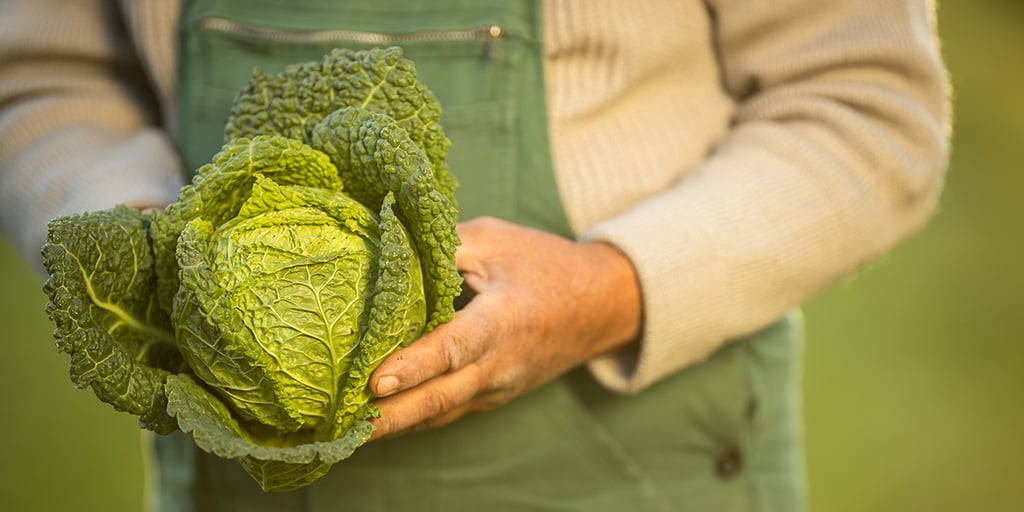
Permaculture has a bunch of benefits that make it an attractive choice for anyone who has land and is looking to grow food, from farmers all the way down to backyard gardeners. Some of the benefits include:
Reduced water usage
You can save on water bills by making use of wastewater and rainwater. Even for homeowners this is worthwhile, but for larger farms it really becomes a more cost effective and efficient way of watering your crops.
It costs less
Permaculture is more cost-effective than growing plants conventionally. You don’t have to spend money on things like pesticides or fertilizers.
Since permaculture systems require less maintenance, usually all you need to do is water crops and occasionally mulch, they also save money in terms of labor.
Reduced waste
If you’re using a permaculture system, nothing goes to waste. Garden waste, leaves, table scraps, and other waste products get turned into fertilizer or food for livestock.
Some permaculture enthusiasts take this further and even make use of things like compost toilets to truly live a zero waste lifestyle. Making use of byproducts is what really makes permaculture sustainable.
Nature does most of the work
Once everything is correctly set up in your permaculture garden, it will take care of itself much more than a conventional one.
Water can be stored in human-made water features to attract birds, frogs, and other beneficial wildlife that will help remove pests as well. Companion planting similarly helps to keep insect problems to a minimum.
Permaculture gardens require a lot less maintenance overall.
Less pollution
Permaculture is a more natural way of growing food and the use of any motorized farm equipment like tractors is rare.
Less toxins
Permaculture uses natural fertilizers and pest control methods and is usually considered organic, so you’re not getting exposed to all of the chemicals you might be if you’re using pesticides and other artificial products on your crops.
Improved values
By practicing permaculture, you’ll naturally develop more ethical and positive values like wasting less, only using as much as you need, reducing pollution, and helping others.
You’ll promote green living through use of only natural fertilizers and pesticides.
More self-sufficiency
Permaculture allows a farmer or gardener to have a wider array of crops on their land. It gives you the self-reliance of being able to grow whatever you want or need to eat.
If there’s extras leftover, you can always learn how to preserve it for later use.
Applicable to existing systems
Existing agricultural systems and land can be transitioned over to the principles of permaculture. Anywhere that you can typically grow food can be used for permaculture on a large or small scale.
Common Permaculture Practices

In the decades since Holmgren first wrote about permaculture, a wide variety of new techniques and practices that fall under the general umbrella of permaculture have sprung up and become included under the topic.
Here are some of the more common subcategories of permaculture.
1) Agroforestry
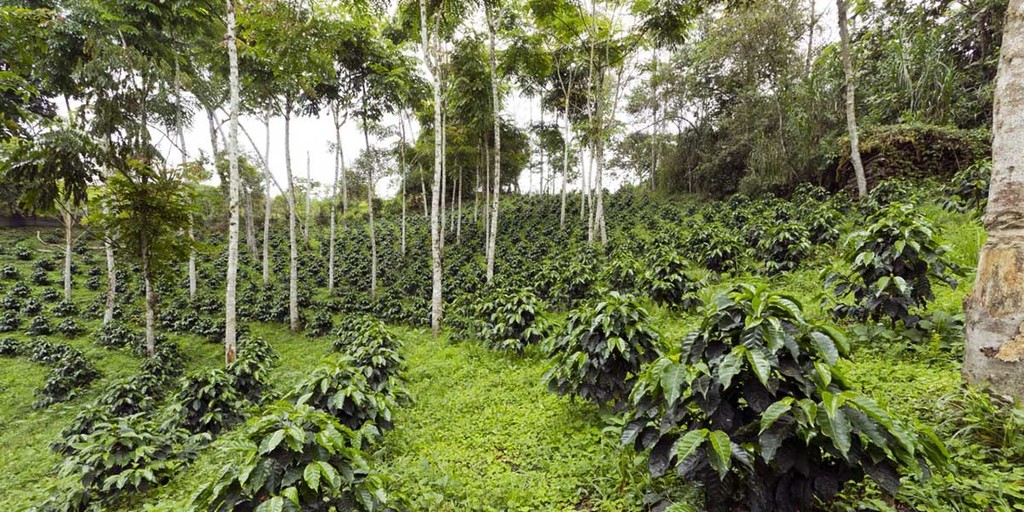
Agroforestry is an approach to permaculture that combines trees or shrubs along with livestock or crops. The name comes from the combination of agriculture and forestry.
These two seemingly separate fields work together to create more sustainable, healthy, profitable, and productive systems.
Under the heading of agroforestry, you have forest farming, which is really an entire permaculture topic unto itself. But the basic idea is to use a seven-layered system to create your food forest.
This includes a canopy layer, low tree layer, shrub layer, herbaceous layer, rhizosphere, ground cover layer, and vertical layer.
It’s designed to mimic naturally-occurring forests, but using nut and fruit trees, vegetables, herbs, and other plants that are useful for humans.
Other agroforestry systems include silvopastoral and silvoarable. Silvopastoral systems combine trees with foraging livestock, while silvoarable combines trees with companion crops.
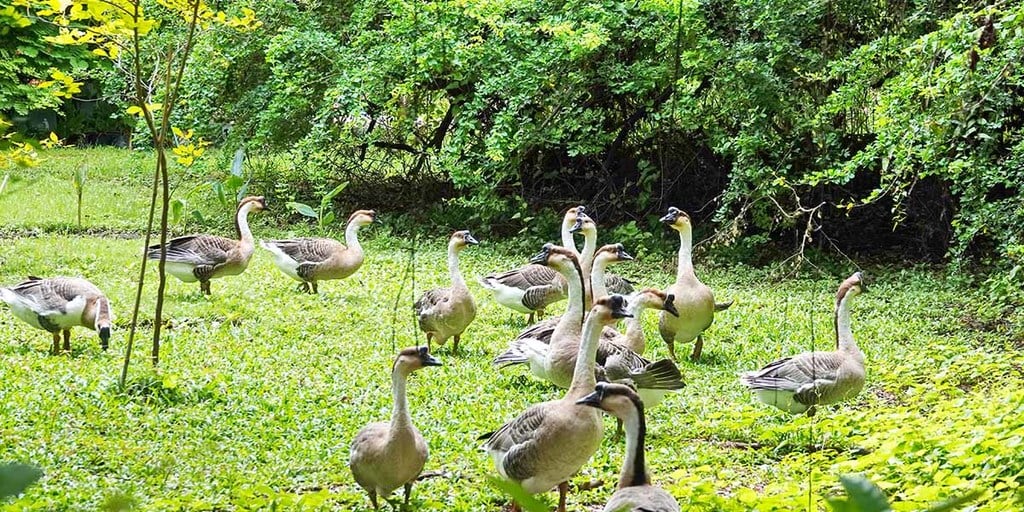
Alley cropping is another agroforestry technique that involves cultivating food, specialty crops, or forage in between wide rows of trees.
As you might imagine, there is a lot of overlap between these different types of agroforestry and they have a lot in common, so the lines aren’t always perfectly clear.
For example, alley cropping can be used as part of a silvoarable system.
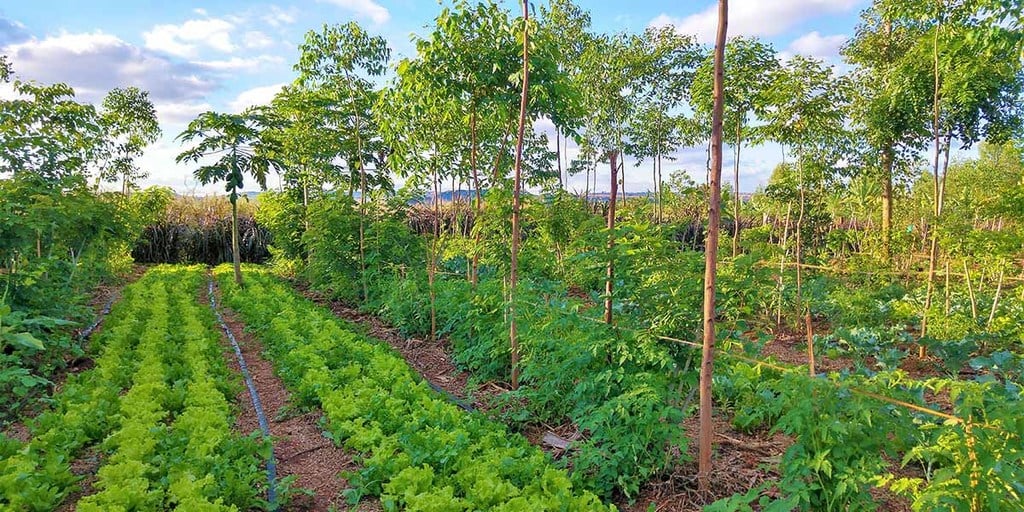
What all types of agroforestry have in common is that they can help to improve crop production, diversify farm income, and provide protection and other benefits to crops.
Having nut trees alongside foraging livestock means that you get the benefits of additional income from the nuts that you gather.
The trees provide protection from the wind, rain and other elements for livestock and reduce the risk of mortality. And animals produce waste as they forge which in turn fertilizes the trees and boosts their production capacity. Examples of cultures around the world combining agriculture with forestry are surprisingly common. They stretch back hundreds of years or more, from Southeast Asia to North America.
- Learn more agroforestry technics in this Agroforestry Ultimate Guide and Examples.
2) Hügelkultur
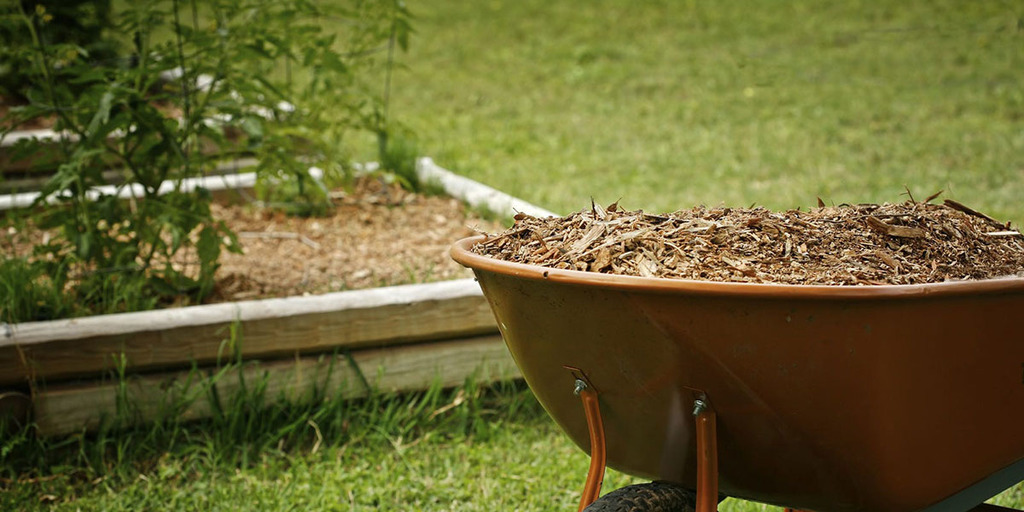
Hügelkultur is German meaning “hill culture.” It’s a technique whereby large amounts of wood are buried to improve the water retention abilities of the soil.
This decaying wood acts like a sponge to hold onto water that seeps into the ground. Often compostable plant materials are planted on top of the mound and eventually composted into the soil as well.
A Hügelkultur is a great way to follow the permaculture principle of catching and storing energy.
Water during rainy times of year gets trapped in the underground wood, which can often hold enough volume to help keep plants alive even through an extended dry season.
This practice is a great alternative to burning wooden debris and other unwanted wood. Instead of releasing carbon into the atmosphere when it’s burned, the wood’s carbon gets sequestered back into the ground.
A Hügelkultur mound usually has a lifespan of 5 or 6 years before the wood fully rots and the process needs to be repeated again.
3) Harvesting Rainwater and Greywater
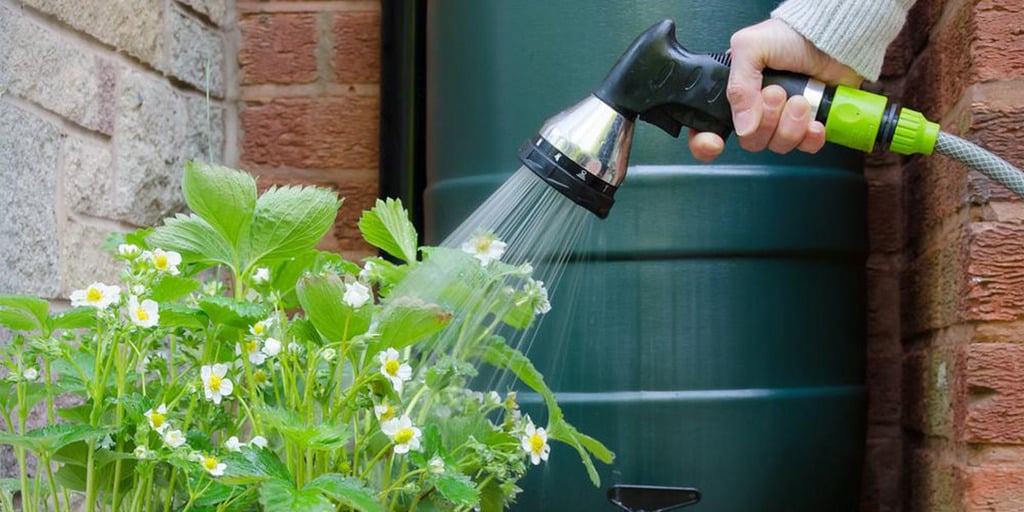
Instead of just letting rainwater run off your land, you can accumulate and store it to use later on. This is embodying the permaculture principle of “catch and store energy.”
Most rainwater is collected from roofs. Homes, barns, and other structures on your farm likely already have eavestroughs that collect and move water away from the buildings.
To harvest rainwater, all you need to do is hook up a large tank to your downspout collect this water, instead of simply letting it soak into the ground and go to waste.
Another water catchment method is stormwater harvesting. It differs from rainwater harvesting in that it deals with the collection of stormwater from creeks, drains, and other waterways instead of from roofs.
One way farmers can create a stormwater harvesting system is by making a cistern or water reservoir at the base of a hill. This will catch most of the water which flows down the hillside. The advantage to stormwater harvesting over rainwater harvesting is that a much larger volume of water than rainwater harvesting can. The downside is that it collects a larger amount of pollutants.
To mitigate this, normally rocks and silt are incorporated into the hill to partially filter the water before it arrives at the cistern.
Both rainwater and stormwater can be used for a variety of applications, including water for irrigation and livestock, as well as even drinking water if properly treated first.
What the water will be used for determines the extent to which it needs to be treated. The water would need to be screened, disinfected, and filtered before it’s potable for humans.
One final source of reusable water on the farm is greywater. This is water that comes from activities in the home or around the farm like taking a bath, washing dishes, or doing the laundry.
This water is different and kept separate from the blackwater of toilets or septic systems, which is difficult to reuse.
Greywater can’t be reused for drinking water since it contains soaps and detergents, but can be used for landscape irrigation and other purposes.
Human waste can be repurposed, although the process is harder and less practical. The two most common approaches are composting or using the material to create biogas.
Biogas is methane from human waste which can be used as a fuel for cooking or heating. Even after composting, it’s not recommended to use human manure on crops because of the high risk of pathogens and bacterial contamination, although they can be used on trees and shrubs.
Getting composting toilets approved by your local sanitation authorities can be a difficult ordeal, so they’re less commonly used.
4) Cell Grazing
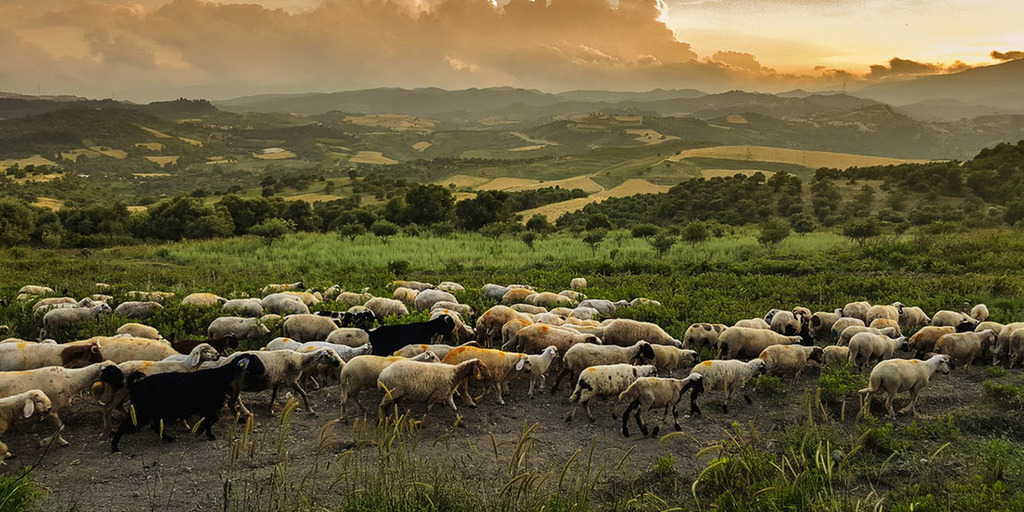
Grazing is usually seen as a negative activity that has the ability to destroy the environment if not practiced responsibly. And it’s true that allowing livestock to overgraze an area can have negative consequences.
Under permaculture, cell grazing (also called rotational grazing) is the preferred method. This involves moving groups of livestock regularly between different fields, pastures, or forests. Either ruminant animals (like cows, goats, and sheep) or non-ruminant animals (like pigs, rabbits, or flocks of geese) can be used effectively for cell grazing.
When done responsibly, the disturbances caused by grazing animals can actually prompt a better ecology and allow plants to regrow more quickly.
Cell grazing involves closely monitoring and monitoring livestock and how they’re interacting with the land.
Plants need adequate rest between grazings, so it’s important that an area gets a rest period to regrow after it has been grazed.
However, you also don’t want to over rest an area or plants can go through lignification (become woody), resulting in lower productivity. So it’s a delicate balancing act.
Even vegans and others opposed to using animals for meat, milk, or fiber can still keep livestock for grazing by using what’s called conservation grazing.
This is the practice of using animals like sheep and goats to eat invasive plants, or allowing them to replace your lawnmower to keep grass short. Animal welfare is maximized, as they’re closely monitored.
Farmers can ensure their livestock are getting sufficient quality and quantity of water, and their nutrition can be managed and supplementation provided as needed.
Conservation farming provides a low-stress environment for domestic animals while also allowing them to contribute productively to the farm and earn their keep.
5) Sheet Mulching
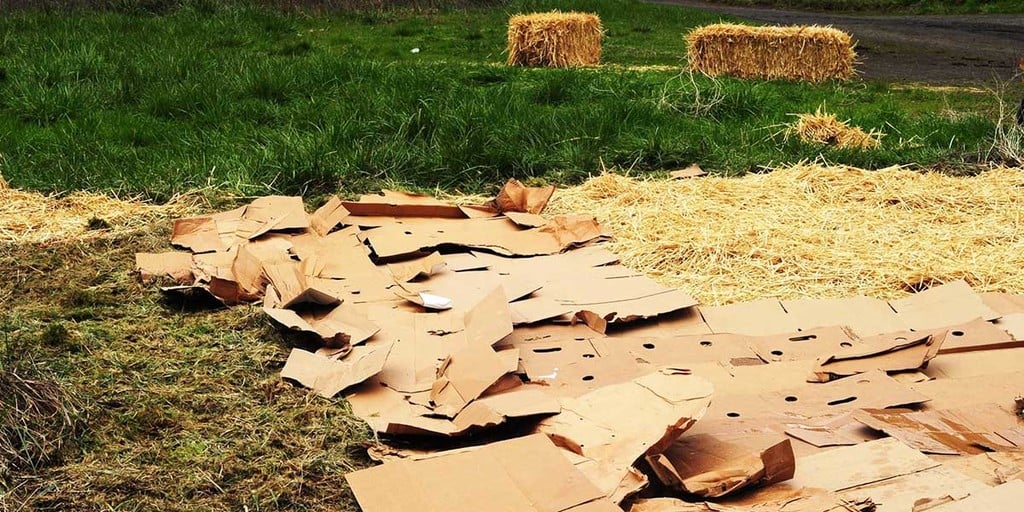
Many farmers and gardeners already make use of mulching, which is just any kind of protective cover placed on top of the soil to retain water and prevent weed growth.
Wood chips, cardboard, plastic, stones, and other materials are all commonly used.
Sheet mulching is an organic no-dig technique that tries to mimic the soil buildup that happens naturally in forests, namely how leaves cover the ground. The practice of sheet mulching is also sometimes referred to as “lasagna gardening” since it uses many alternating layers of materials. In a cross-section, land that has had sheet mulching applied to it would look like a slice of lasagna.
Most commonly, sheet mulching uses alternating layers of “green” and “brown” materials. Brown materials include fallen leaves, shredded paper and cardboard, pine needles, wood chips, and straw.
Green materials include manure, grass clippings, worm casings, vegetable scraps, hay, coffee grounds, and compost.
Anywhere from 5 to 10 layers of materials may be used. Your sheet mulching should always be topped with straw or wood chips.
Sheet mulching helps add nutrients and organic matter to the soil, suppress weed growth, moderate temperatures and protect against frost, reduce erosion and evaporation, and absorbs rainfall.
6) Natural Building

Natural building is a more sustainable approach to construction than going down to your local hardware store or lumber yard for materials.
In a permaculture system, you should strive to use as many recycled or salvaged materials as is practical.
There are plenty of renewable resources on the land that you might be able to make use of in your next building project.

Clay, rocks, wood, reeds, straw, and sand are all readily available materials that most people overlook.
For example, subsoil, water, straw, and lime can be combined to create cob. This building material is very low cost, but it’s also fireproof, resistant to seismic activities, and is strong enough to build entire houses out of.
Despite being made of natural materials, cob is very resistant to weathering. With proper maintenance, a cob structure will last a very long time. In fact, the oldest cob house still standing is estimated to be 10,000 years old. Not bad, considering the cost to build a small cob house is only about $5,000 to $10,000.
Cob also allows for some very unique architecture that isn’t possible with bricks or other traditional building materials, since you can mold it like clay into any shape that you want.

Adobe is another material similar to cob which is used all over the world, from Mexico to the Middle East.
Less natural materials like tires can also be used for construction. Earthship homes are a type of passive solar earth shelter that are constructed by stacking tires filled with earth to form walls, and then covering them.
This can be a great way to repurpose used tires that would otherwise end up in landfills or incinerated. Discarded glass windows are also often similarly used instead of buying new.
7) No-Till or Minimum-Till Farming
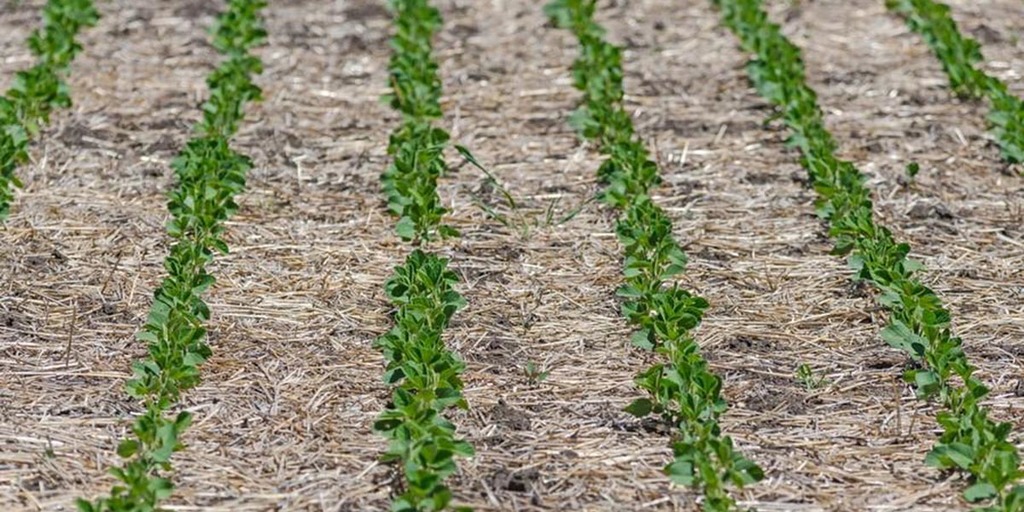
Minimum-till or no-till farming aims to leave soil undisturbed. Instead of breaking up the soil before planting, it’s simply left undisturbed.
This helps retain water, prevents carbon from leaving the soil, improves soil quality, and reduces the amount of weed seeds being brought closer to the surface to germinate.
Conventional farming disturbs the soil. This lets carbon dioxide into the atmosphere and overly oxygenizes the soil.
Loosening the soil like this can also lead to erosion and nutrient runoff, as well as destroying beneficial fungi networks in the land.
With the proper techniques, tilling is something that can be minimized, or potentially even eliminated entirely for some systems.
8) Intercropping and Companion Planting
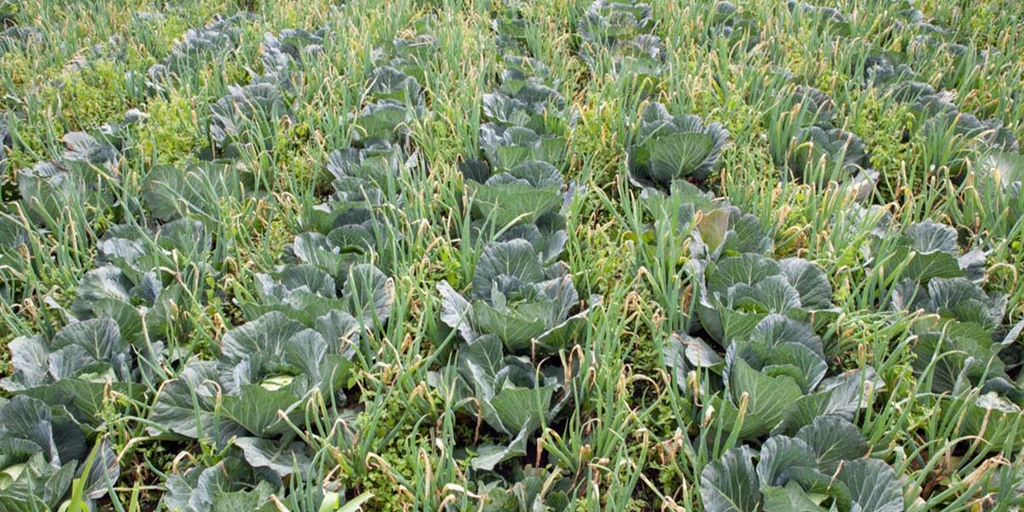
Intercropping is the combining of two or more plant species into an area which have beneficial effects on one another.
One example is companion planting, where strong-smelling plants and herbs like basil, oregano, chives, or garlic alongside main crops like tomatoes, carrots, or cabbage.
Pests hate the smell of many of these strong-smelling companion plants. Not only that, but some of them actually improve the growth and flavor of the plants they’re paired with as well.
Others loosen the soil or give other benefits.
You will need to look up different plant companions and carefully plan your garden accordingly.
While many plants work well if combined with other plants, there are other plants that don’t get along because they require the same nutrients, or for other reasons. For example, carrots don’t like to be planted near dill, sage attracts pests that feed on cucumbers, and most plants dislike being planted near fennel.
9) Market Gardening
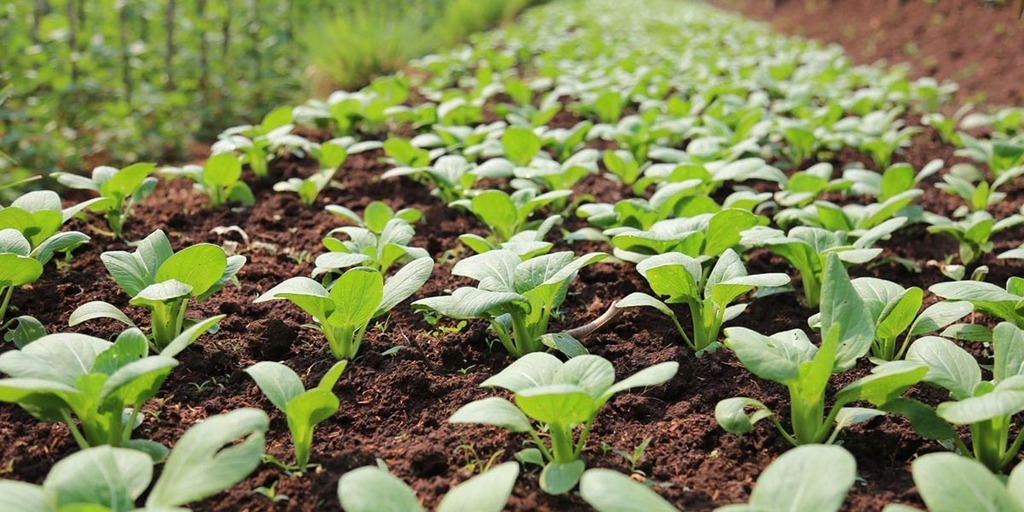
Market gardening is an interesting move away from traditional agriculture, which is done on large tracts of land far out in the country, to smaller plots of land that are sometimes even located in urban environments.
Like the name suggests, market gardeners often sell their produce at farmer’s markets, although some may supply restaurants and grocery stores directly as well.
In market gardening, cash crops are intensively grown on a small scale (usually less than an acre of land.)
A market gardener can earn as much as $100,000 per year while growing on as little as a quarter acre of land. Permaculture and other sustainable practices are a big part of what makes this possible.
- Check out these small scale farming ideas which you can grow into your farm.
The Importance of Permaculture Farm Design
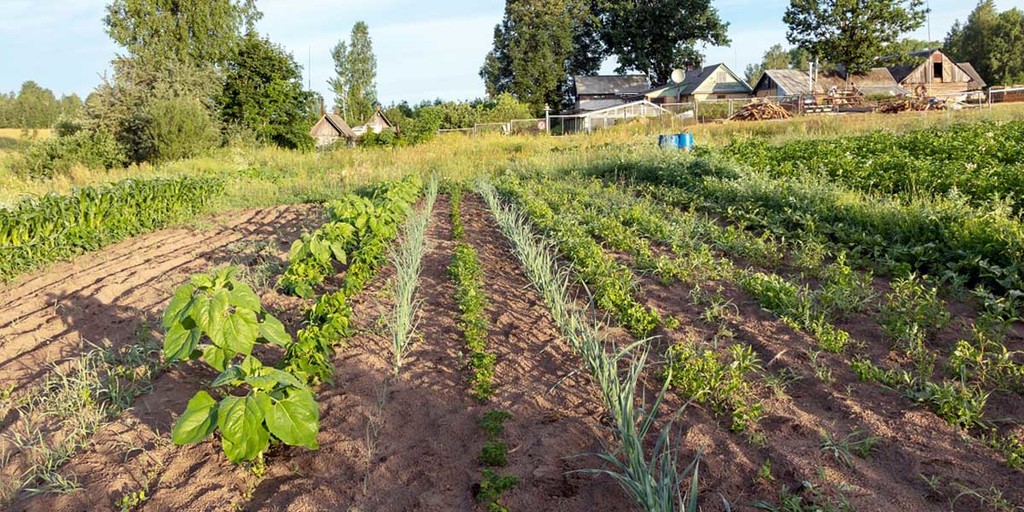
Permaculture is crucial, because right now, it’s the only food production system we have that’s beyond sustainable.
Conventional agriculture tends not to be sustainable at all, so it’s not really something to measure against. Really we should set the bar at sustainability because that’s what’s necessary for humanity to survive in the long term.
But really we strive for food production systems that will give a net positive result. Otherwise, the human population won’t be able to grow and still have all of its food needs met.
So the goal of permaculture is to design a system where more energy gets extracted from the system over its lifetime than what you have to put in.
Usually, this involves working with a closed-loop system that incorporates waste products back into the system.
Permaculture is adaptable. It’s constantly under development and permaculture farmers are constantly trying to find better and more efficient ways of doing things, and to have a better understanding of nature.
Biodiversity thrives under permaculture. We don’t have to make the tradeoff of destroying forests and other habitats for wild plants and animals, just to produce our food or earn an income. It’s a way of people living more symbiotically and sustainably, and being better stewards of the environment while still getting our own needs met.
- Learn more about farmers lifestyle, learn what a homestead is, and why you should start homesteading.
The History of Permaculture
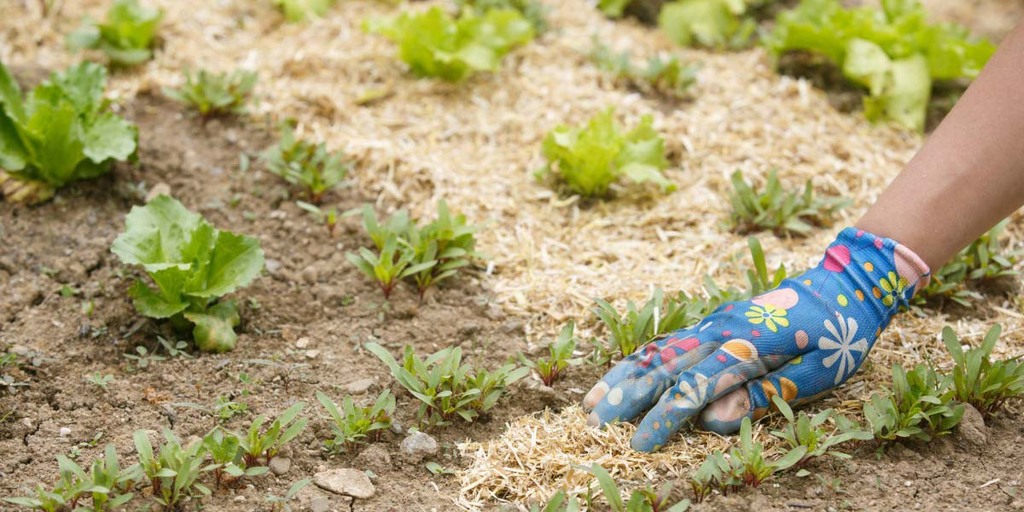
Permaculture as we know it today was originally developed by David Holmgren and Bill Mollinson of Australia in the 1970s.
It came about a decade after the world began to learn about the dangers of pesticides like DDT and the threat they posed to humans and the environment.
The term was made from a combination of the words “permanent” and “agriculture” since it was designed for the creation of sustainable (in other words, permanent) systems.
It was one of the first agricultural systems devised where we began to understand that local actions could have global impacts.
Although Holmgren is credited with popularizing permaculture, it’s worth noting that several works on topics like agroforestry and forest farming had existed since the 1930s or earlier, and unwritten records of similar techniques most likely date back much farther than that.
Frequently Asked Questions
Q: What is the difference between permaculture and organic farming?
A: Organic farming means not using chemical fertilizers, pesticides, or genetically modified organisms.
Permaculture includes organic farming practices, but goes beyond that and lays out larger systems about how a farm should be structured, how to reduce waste, and other important considerations as well.
Q: What is the difference between horticulture and permaculture?
A: Horticulture simply refers to the growing of plants for commercial consumption, usually vegetables. There is some overlap, and parts of permaculture can be classified as horticulture.
But horticulture also applies to other farming techniques like monoculture, and permaculture includes things like raising livestock that aren’t part of horticulture.
Q: Where can I find permaculture farms near me?
A: Many permaculture farms are eager to show the great work they’re doing to the public and allow visitors. But there isn’t necessarily one directory where you can look to find permaculture farms in your area.
I recommend doing a Google search for “permaculture farm + (your city)” to find farms in your area. Many of them will have websites or social media pages where you can contact them to learn more.
Conclusion
Permaculture is a great way to continue generating high yields and maintain your current level of productivity, even if you’re switching away from a more conventional farming model or system.
It gives a more environmentally-friendly and sustainable system for agriculture by taking a more holistic approach to managing livestock and crops.
Not only can permaculture be just as profitable as conventional farming, it’s often easier and less labor-intensive as well.
This is because using the 12 principles of permaculture, you allow nature to work for you, instead of trying to work against it.
Original post here https://grocycle.com/permaculture-farming/.

